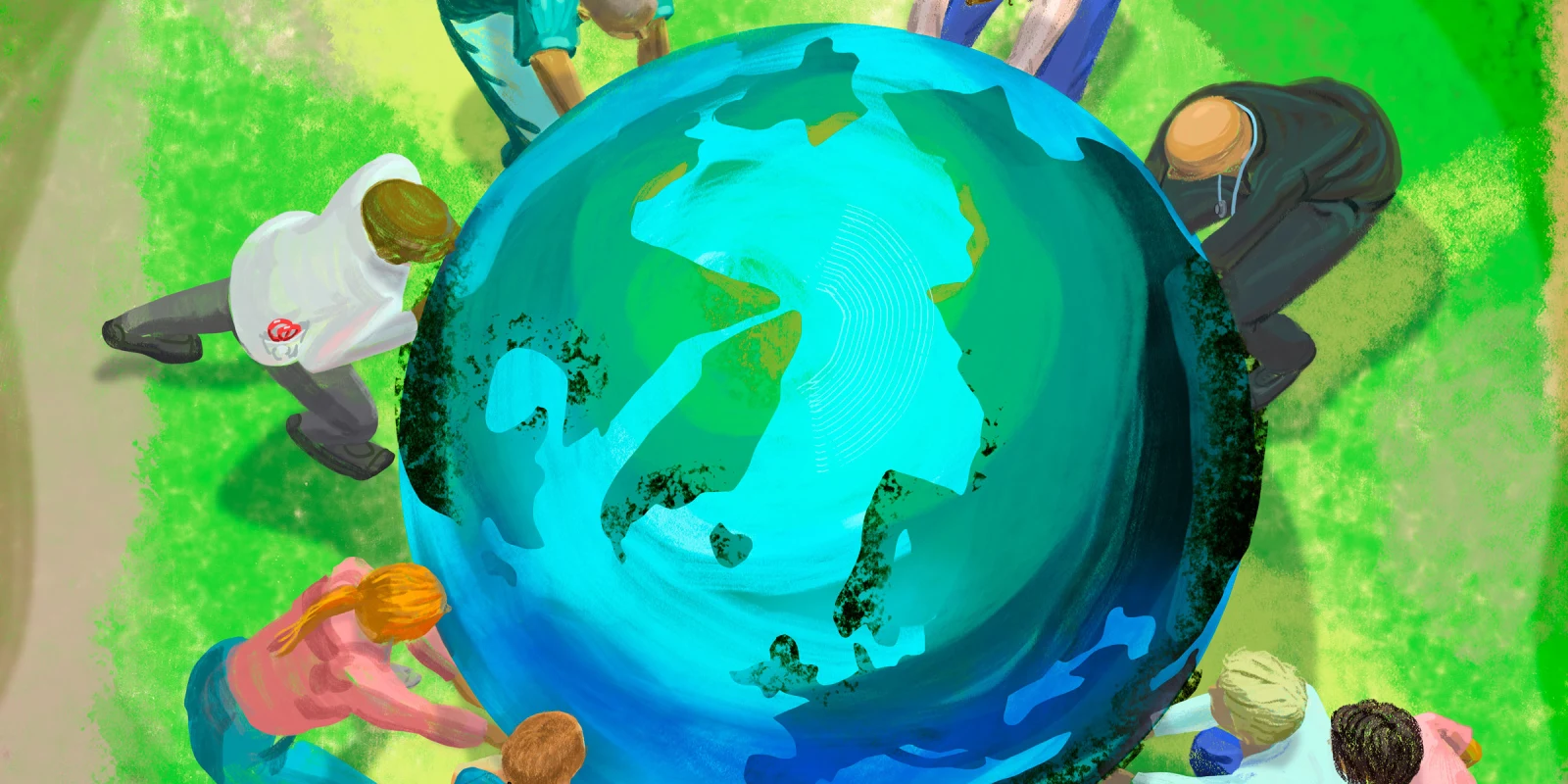I vividly recall my first time stepping into the OR as a third-year medical student. It was for an appendectomy, one of the most common abdominal surgeries, with almost 300,000 performed in the U.S. each year. As a brand-new face in the OR, I was impressed by everything I saw: the clarity of the laparoscopes, the practiced dance of the surgeons and technicians, and most of all, the blinding speed with which the team could perform the procedure. However, despite the novelty of all the processes happening before me in the well-oiled OR, what shocked me most was the amount of waste produced by this one short surgery.
The appendectomy had produced enough waste to fill two large garbage cans. My mind started tabulating the number of garbage cans filled by my assigned OR that day alone, then in all of the ORs in our hospital, and on and on until I felt crushed under the astronomical amount of waste produced by our health care system.
I continued to notice examples of staggering waste throughout my time in medical school. In the ICU, clinicians would open entire line kits just to use one small component. Delays in removing precautions from a patient’s door occasionally led to entire boxes of PPE being wasted.
The mountain of medical waste I confronted in the hospital sparked my curiosity about sustainability in health care. What I found was shocking.
In the U.S., we have a biocapacity of about 3.8 global hectares, or “gha” (the numerical unit used to quantify biocapacity), but our ecological footprint is 8.2 gha, meaning that we are using resources twice as fast as they can be replenished. What’s staggering is that we have been consuming at this level for decades.
The U.S. health care sector alone is responsible for four billion tons of waste per year, 10% of national emissions, and an estimated loss exceeding 435,000 disability-adjusted life years.
It seems easy to argue that our hands are tied when our patients’ immediate health is on the line. Yet it is becoming more and more apparent that we cannot isolate ourselves from the adverse effects of pollution and climate change. We are likely causing harm to our communities and our patients. We are likely contributing to poor air quality leading to asthma and lung disease. And we are likely contributing to the contamination of water and air, and the mental and physical injury that follows.
Eventually, something has to give — and it is. Climate change, no longer looming in the background, is exponentially becoming a public health threat that already affects millions of people around the world today.
The WHO estimates that, between 2030 and 2050, climate change is expected to cause 250,000 deaths per year. It is a threat that highlights and exacerbates the enormous inequities in the sustainability and health of our communities, both at home and abroad. It is an international issue, and as we work together to mitigate the threat of climate change, we must amplify the voices of those who are most affected by it.
These front-line climate change “witnesses” are the most severely impacted, despite often contributing to the cause the least. They include Indigenous people and other minority communities. These are the people who are bearing the brunt of our waste and dependence on fossil fuels, and our lack of motivation to change. We in the health care industry, who have contributed more than our fair share to the greenhouse gases warming our planet, can be on the forefront of change — tackling climate change from a public health perspective.
What can we do about it? There are examples we can follow. In the U.K., the National Health Service Climate Change Act has resulted in a 62% reduction in their carbon footprint since 1990, and they are currently on track to reach an 80% reduction in the near future. Their approach is multifactorial, including things like greater investment in preventive medicine, reducing health inequalities, switching to low-carbon inhalers and electric ambulances, and improving the energy efficiency of their buildings.
In the U.S., Kaiser Permanente, one of the nation’s largest health care systems, announced that it has become carbon neutral. Furthermore, it has made efforts to source sustainable foods, reduce water consumption, improve recycling, and increase the use of environmentally safe products.
Similar trends are starting to emerge across the U.S., and early adopters are reaping benefits. Boston hospitals have saved millions of dollars by decreasing their energy consumption by 9.4%, and Virginia Mason saved 3 million dollars by reprocessing single-use medical devices.
Ultimately, we are doing harm to our patients and our communities with the unsustainable way we have built large parts of our health care system. We are barreling toward a future in which more and more people may potentially face elevated heat, natural disasters, malnutrition, and violence. It is vital that, as we work to mitigate one of the greatest threats of our time, we do so through the lens of environmental justice and equity.
How can the health care industry help minimize medical waste? Share your ideas in the comment section.
Catherine Cheney is an internal medicine intern at Duke University.
Illustration by Jennifer Bogartz







